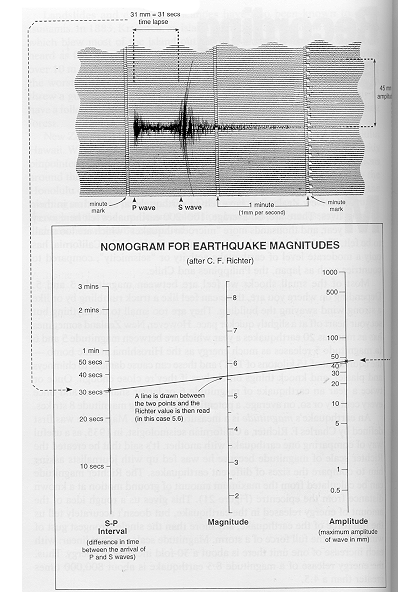The Richter magnitude of an earthquake is determined by using two pieces of information from the seismogram record: the amplitude (heigh) of the largest wave, and the time between the P and S waves. The latest gives an estimate of the distance from the eartquake focus to the station. Then, a single line can be drawn across a chart called a nonograph(bottom). This line must go from the time value at the left column, to the amplitude value at right one. The Richter magnitude can be read off at the central column.
Each instrument has its own nomograph chart because it has its own specific magnification of the Earth's movements caused by the seismic waves.

This was among the first attemptes to measure the strength of an earthquake in California by professor C. Richter. Hence the notation like Richter Scale, Richter Magnitude and so forth.